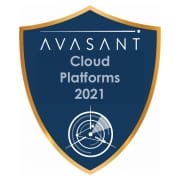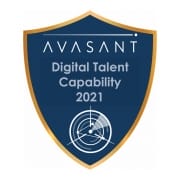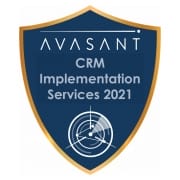The Evolution of Sourcing Advisory: From Cost-Savings to Business Value
October 2020 | Interview with Kevin Parikh – CEO & Chairman, Avasant
Costs and Service Levels vs. Digital Strategies
When it comes to outsourcing, there are really two fundamental objectives. The first is the traditional focus on saving money and improving service levels. Whether it is IT outsourcing or business process outsourcing, can we get someone to do it more cost effectively and at a higher level of service? That has been the story of outsourcing and outsourcing advisory services for the last twenty years.
But there is another side of the coin, where we have only now started to scratch the surface. It involves shifting our focus from cost optimization towards revenue generation and from service optimization to digital strategy. Digital strategies have made it possible to generate new revenue, open up new markets, better position products and services, and add business value. Whereas, traditional outsourcing was focused on IT and back office, digital strategy is about your customer-facing processes, whether you’re a retailer, manufacturer, healthcare provider, financial services firm, or any type of business.
Despite all the talk today about digital transformation, digital strategies are still a relatively unexplored area when it comes to outsourcing. Traditional sourcing consultants and advisors have been very one dimensional, focused on saving money, so much so that sometimes they cannot see the world any other way.
LEARN MORE ABOUT OUR OUTSOURCING ADVISORY SERVICES
hbspt.forms.create({ css: '', portalId: '1773457', formId: '1aafd931-6770-4134-82d5-3bbf601a490b' });Changing the Game to Focus on Business Value
Because digital transformation is all about the business, the key metrics are different. It is not just about saving money or meeting service level agreements. It is about adding new customers, retaining existing customers, and increasing revenue. Our outsourcing advisors often find that clients who are two or three cycles into outsourcing become frustrated with the fact that they are not seeing new business value through each contract renewal or rebid. Business value was never defined in the contract.
And, it is not only customers who are frustrated. Service providers are also frustrated with the constant push to take even more costs out of the contract and ever-increasing demands for higher levels of service. As a result, deals are not as lucrative for providers as they once were.
So how do we, as strategic sourcing consultants, help customers and providers reverse that cycle? How do we foster partnership and innovation? Customers are not eager to switch providers, with all the pain involved in transitioning. Moreover, provider offerings are all starting to look the same. The client runs an RFP process to meet some new player, but the RFP process just ensures that the winning provider will be the one that meets the lowest common denominator of support. This is what today’s unmanaged sourcing process naturally drives us to. The future of our industry will not include this cycle. Clients today will need to engage differently with service providers. Therefore, we may not always run an RFP process. Instead, we may lay out a process to help the client transform the engagement with their current provider. Our outsourcing advisors may create a digital strategy to help the incumbent provider identify better solutions that it can use to help the client, and do so collaboratively.
As-a-Service Eating Traditional Managed Services
The world is changing. Traditional managed services offerings were all about exchanging internal labor with external labor, at a lower cost due to labor arbitrage and economies of scale. But today, technology providers have the ability to deliver just about anything as a service. This is disrupting the traditional managed services offering.
Consider, for example, Microsoft Office 365. It is not a managed services offering. It bundles hardware, software, storage, and applications into one offering at a per-user, per-month charge. Office 365 and competing services from vendors such as Google are disrupting managed services which make money by offering data center services, storage, applications, and support staff for email and collaboration systems. Office 365 bundles it all as a service at a price you can’t negotiate. So, there’s no need for a long RFP process.
It’s not just collaboration systems. The same thing is happening in business applications, such as ERP, CRM, HCM, and supply chain. Newer cloud applications do not run in a traditional managed services applications environment. Everything is bundled into the software as a service. So, what does that do to the traditional managed services deal? It is shrinking it. Deals are shrinking because they are being cannibalized by as-a-service solution offerings.
So, is there still a role for service providers? Yes, but their role needs to evolve into integrating all these various services. Service providers need to shift to ensuring those offerings integrate with each other and with the client’s internal and customer-facing processes. They need to elevate their game to ensure that the client realizes business value from the portfolio of services.
A Case Study in Business Transformation
One of our clients is a good example of how we can facilitate this transformation. We did a very large project for the Greater Toronto Airport Authority. Working with the client, our outsourcing consultants concentrated on rethinking how the airport, suppliers, the airlines, and technology can be integrated into a holistic customer experience.
What do I mean by that? In the airport of tomorrow, you will walk in and (with your permission) the airport will recognize your face. Most passengers will opt in for facial recognition because it will make life easier. The system will automatically download a set of relevant data to your smartphone, and it will integrate with all of your airline apps as they welcome you to the airport.
“Hello Kevin Parikh, welcome to the Greater Toronto Airports. I see that you are traveling today on Air Canada flying to Los Angeles. In your preferences you have requested a coffee from Starbucks, lunch from Barista. Your flight is running on time and you have time for these. Would you like these items delivered to you at the gate? Would you like them delivered to you in the lounge? I see you have nothing to check in today, you can go directly to the security line. You qualify today for the business lounge; it is located to your right.”
The system will integrate the myriad of different services, touchpoints, and interactions in your travel routine. All the data and information to make a unified airport experience begins with facial recognition and location services which tell the airport who you are and where you are.
The airport of the future will know every person that is in the airport, color coded green, yellow, and red. Green denotes those that are self-identified; yellow, those not self-identified; and red, those that could be potential threats. The technology for the airport of tomorrow extends past functionality and efficiency. It has the potential to streamline security efforts and increase visibility. This is an engagement that we delivered on, so the strategies that I am talking about are very real. That is where our business is going.
Delivering Business Value Calls for New Deal Structures
We are structuring outsourcing deals today in a radically different way. This is a natural evolution of the services that we have been offering. If we do not embrace these changes, the cannibalization of services I mentioned will shrink the size of the traditional managed services deal and limiting the business value that clients can achieve. Our work has moved to automation platforms, and we must increasingly leverage those platforms for digital transformation.
The sponsors of our outsourcing advisory engagements are also evolving. These days, we are dealing with many C-suite leaders in addition to the CIO. I recently had a meeting with one of our healthcare clients, and the kick-off was with the president, the COO, the CFO, and the CIO. Our strategic initiatives now affect all aspects of the business, so everyone wants a seat at the table.
Increasingly, the CIO is at most a co-sponsor. If you are a health insurance provider, and you want to provide better access to plan members, that is not an IT issue. It is a business issue. Even if your outsourcing services provider is using digital technology to get you there, that is still a business issue that is enabled by the technology. This is what clients are seeking. They no longer care just about cost-cutting. They care more about what their customers are going to experience. Otherwise, customers are going to go to another health plan where they have a better social connection, a better customer contact center interaction, and a better user experience on the web or on their mobile device.
Sourcing Advisory Is Not Just About Outsourcing
Despite all this, helping our clients identify outsourcing opportunities and negotiating service provider contract is still an important part of our business that will never go away. There are still a lot of managed services deals to be negotiated, no doubt. But even in those deals our clients want business transformation services to also be applied to them.
But we also have other clients that are on a transformational journey, and they are not interested in a managed services deal. The problem is not the term “sourcing.” The problem is how sourcing has been defined over the past two or three decades. It has been defined in terms of labor savings. That is not what sourcing means. Sourcing means going to a third party and having services delivered. Whether those services are delivered through people, a platform, or robots shouldn’t matter. If it matters to us, it means we have become entrenched in an old model that is becoming increasingly irrelevant, and we are not willing to move to where the market is going. That is what sourcing is. How we define it today is indicative of the direction we must move towards to survive.








